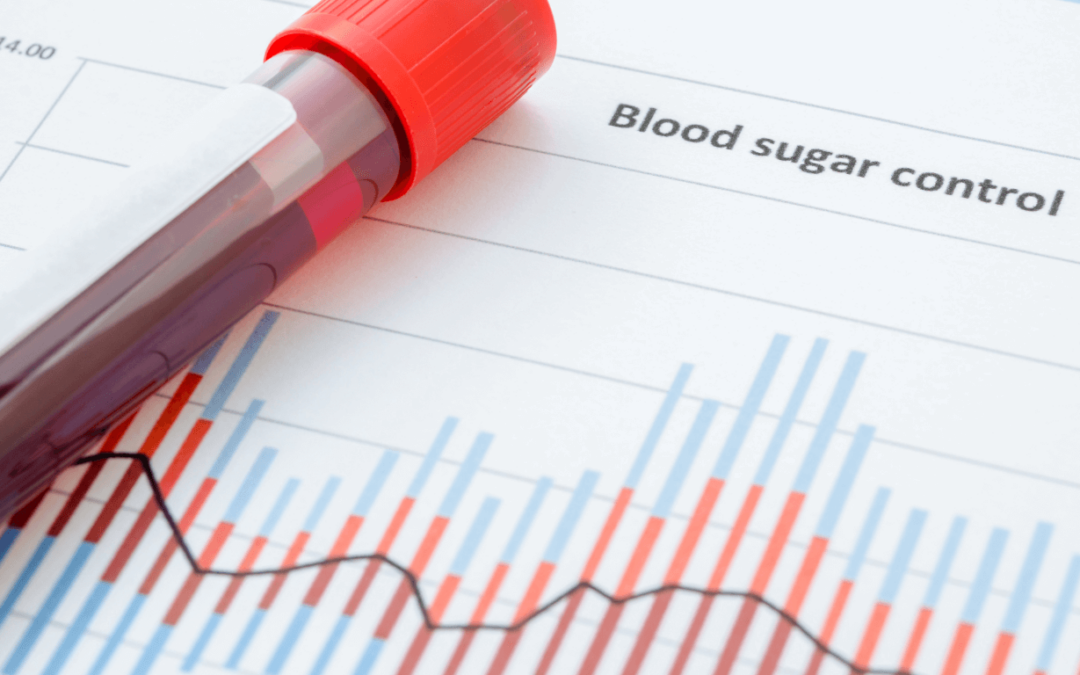
3 effective diets for improving glycemic control
With the surge in prediabetes and type 2 diabetes, dietary strategies are no longer just general lifestyle advice — they’ve become powerful therapeutic tools.
But which one should you recommend in clinical practice?
One of the most reliable ways to assess a diet’s effectiveness is by tracking changes in HbA1c, a key marker of long-term glycemic control.
HbA1c reflects average blood glucose over the past 2 to 3 months. The higher the level, the greater the risk of complications such as retinopathy, neuropathy, and cardiovascular disease.

Comparison of the Most Studied Diets
🔹 Low-Carb Diet
- Definition: moderate carbohydrate restriction (<130 g/day)
- Effect on HbA1c: −0.28% to −0.44%
- Notes: Effective in the short term, but benefits tend to fade without long-term support.
🔹 Ketogenic Diet
- Definition: very low in carbohydrates (<50 g/day), high in fats
- Effect on HbA1c: −0.38% to −1.1%
- Notes: Rapid and significant impact, but requires close medical supervision. Not always suitable for long-term use
🔹 Mediterranean Diet
- Definition: high in vegetables, fruits, olive oil, legumes, and fish
- Effect on HbA1c: −0.3% to −0.5%
- Notes: An excellent balance of effectiveness, adherence, and cardiovascular protection.
In clinical practice:
The best diet is the one a patient can realistically maintain over time, with sustained improvements in glycemic control and quality of life.
Key success factors:
- Tailor dietary advice to the patient’s age, treatment plan, BMI, comorbidities, and likelihood of adherence
- Provide ongoing support and education
- Monitor regularly: HbA1c, weight, abdominal circumference, lipids, nutritional status
Sources :
Ajala O, English P, Pinkney J. Systematic review and meta-analysis of different dietary approaches to the management of type 2 diabetes. Am J Clin Nutr. 2013 Mar;97(3):505-16. doi: 10.3945/ajcn.112.042457.
Régimes méditerranéens et prévention du diabète : à l’heure des preuves https://hal.science/hal-03493556/document
Esposito K, Maiorino MI, Ciotola M, Di Palo C, Scognamiglio P, Gicchino M, Petrizzo M, Saccomanno F, Beneduce F, Ceriello A, Giugliano D. Effects of a Mediterranean-style diet on the need for antihyperglycemic drug therapy in patients with newly diagnosed type 2 diabetes: a randomized trial. Ann Intern Med. 2009 Sep 1;151(5):306-14. doi: 10.7326/0003-4819-151-5-200909010-00004.
Meng Y, Bai H, Wang S, Li Z, Wang Q, Chen L. Efficacy of low carbohydrate diet for type 2 diabetes mellitus management: A systematic review and meta-analysis of randomized controlled trials. Diabetes Res Clin Pract. 2017 Sep;131:124-131. doi: 10.1016/j.diabres.2017.07.006.
Snorgaard O, Poulsen GM, Andersen HK, Astrup A. Systematic review and meta-analysis of dietary carbohydrate restriction in patients with type 2 diabetes. BMJ Open Diabetes Res Care. 2017 Feb 23;5(1):e000354. doi: 10.1136/bmjdrc-2016-000354.
Huntriss R, Campbell M, Bedwell C. The interpretation and effect of a low-carbohydrate diet in the management of type 2 diabetes: a systematic review and meta-analysis of randomised controlled trials. Eur J Clin Nutr. 2018 Mar;72(3):311-325. doi: 10.1038/s41430-017-0019-4.
Effect of the Ketogenic Diet on the Prophylaxis and Treatment of Diabetes Mellitus: A Review of the Meta-Analyses and Clinical Trials. Dyńka D, Kowalcze K, Ambrozkiewicz F, Paziewska A. Nutrients. 2023 Jan 18;15(3):500. doi: 10.3390/nu15030500.
Efficacy of a High-Protein Diet to Lower Glycemic Levels in Type 2 Diabetes Mellitus: A Systematic Review. Flores-Hernández MN, Martínez-Coria H, López-Valdés HE, Arteaga-Silva M, Arrieta-Cruz I, Gutiérrez-Juárez R. Int J Mol Sci. 2024 Oct 11;25(20):10959. doi: 10.3390/ijms252010959.
Comparison of the Effect of Intermittent Fasting with Mediterranean Diet on Glycemic, Lipid, and Anthropometric Indices in Type 2 Diabetes: A Review of Randomized Controlled Trials. Dehghani S, Karimi P, Tarei NN, Masoumvand M, Manesh MAN, Ramezani E, Askari VR. Curr Hypertens Rev. 2025 Apr 11. doi: 10.2174/0115734021351456250326051146.
Anti-glycaemic effect of the Chinese modified DASH diet combined with 23% low-sodium salt in patients with hypertension and type 2 diabetes: a clinical trial. An J, Liu G, Luo W, Zhou X, Mei Y, Zhang Z, Zhao L, Huang Y, Mu L. Diabetol Metab Syndr. 2025 Feb 12;17(1):55. doi: 10.1186/s13098-025-01618-7.
Investigating the Effectiveness of Very Low-Calorie Diets and Low-Fat Vegan Diets on Weight and Glycemic Markers in Type 2 Diabetes Mellitus: A Systematic Review and Meta-Analysis. Kashyap A, Mackay A, Carter B, Fyfe CL, Johnstone AM, Myint PK. Nutrients. 2022 Nov 17;14(22):4870. doi: 10.3390/nu14224870.
The Effect of Dietary Glycaemic Index on Glycaemia in Patients with Type 2 Diabetes: A Systematic Review and Meta-Analysis of Randomized Controlled Trials. Ojo O, et al. Nutrients. 2018. PMID: 29562676 Free PMC article. Review.
Intermittent v. continuous energy restriction: differential effects on postprandial glucose and lipid metabolism following matched weight loss in overweight/obese participants. Antoni R, Johnston KL, Collins AL, Robertson MD. Br J Nutr. 2018 Mar;119(5):507-516. doi: 10.1017/S0007114517003890.
Intermittent fasting and health: Does timing matter? Dote-Montero M, Clavero-Jimeno A, Labayen I, Ruiz JR. Clin Transl Med. 2025 May;15(5):e70325. doi: 10.1002/ctm2.70325.
Sutton EF, Beyl R, Early KS, Cefalu WT, Ravussin E, Peterson CM. Early Time-Restricted Feeding Improves Insulin Sensitivity, Blood Pressure, and Oxidative Stress Even without Weight Loss in Men with Prediabetes. Cell Metab. 2018 Jun 5;27(6):1212-1221.e3. doi: 10.1016/j.cmet.2018.04.010.






